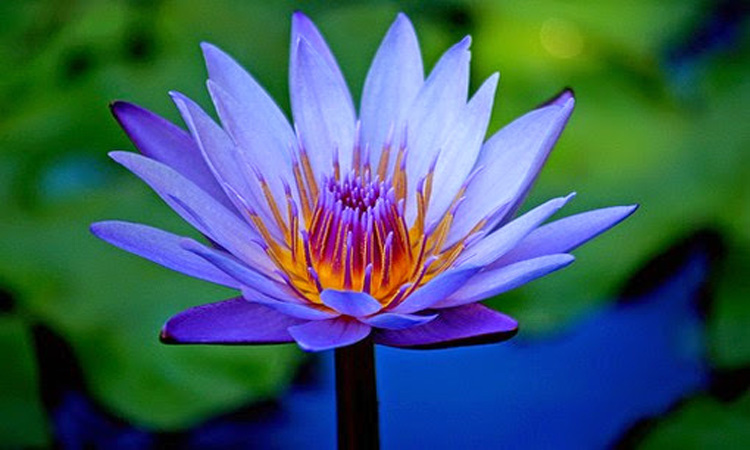
Blue Lotus : The Entheogen of Ancient Egypt
For over 3000 years the Blue Lotus was used by priesthood of ancient Egypt for its medicinal properties and as a spiritual sacrament. The Blue Lotus generally produces mild psychoactive effects that are purported to have a "divine" essence, which brings upon the feelings of tranquility and subtle euphoria. Nymphaea caerulea, also known as the Egyptian blue lily or sacred blue lotus, is a blue water-lily in the genus Nymphaea that grows along the Nile and other places such as the Indian Subcontinent and Thailand. The main effect you will probably sense is a pleasant feeling of warmth around the head and upper body; a very comfortable, dreamy feeling, with a slight stimulant effect. Many people relate to an expanded state of awareness with feelings of a psychic opening of the higher chakras, especially the 6th, or the third-eye. The sacred flower seems to produce a subtle, high-level, expanded state of consciousness that may have been used in ceremonial meditation and magic. Energy workers have reported a heightened sense of psychic energy and the ability to better utilize these higher states in their practices. Many people also use the Sacrament to enhance meditation, utilizing the dreamy, trance-like effects to reinforce an alpha-state. Using the Sacrament before bedtime has also been reported to induce lucid dreaming. Perhaps the most well-known role of the blue Lotus flower in Egyptology is set in it’s association with the Sun, the creation, and rebirth. The reason that that Lotus is used as a metaphor for these things is due to the way that it raises out of the water, over a small period of time, and flowers in the morning to the late afternoon, before sinking below the surface again. The repeat of this pattern makes it easy to understand why the Egyptians chose it to symbolize the Lotus with rebirth, as it followed the same pattern as the sun.

